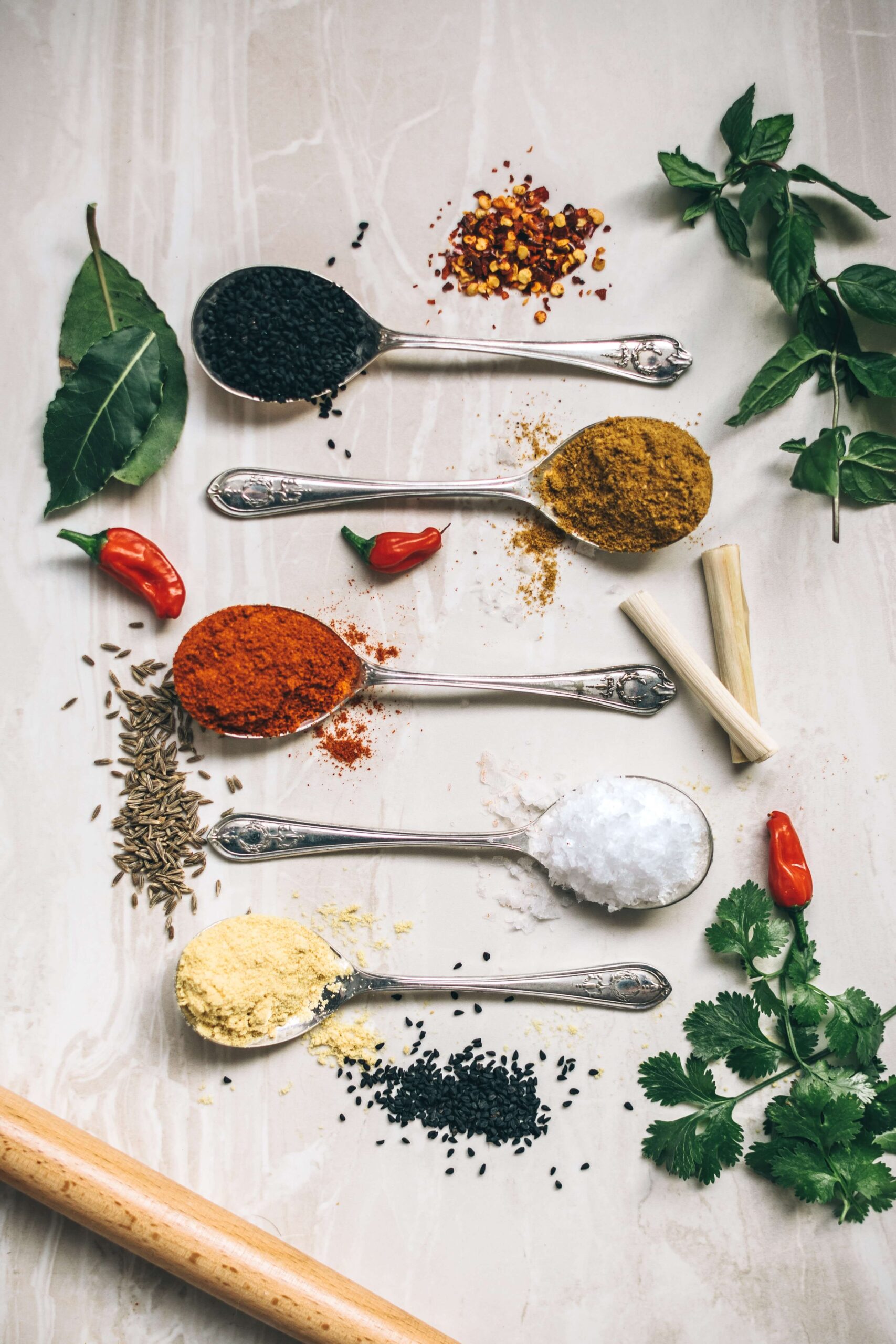Winter is a season that calls for warmth and comfort, and one of the best ways to achieve that is through the use of spices in our meals.
In Indian cuisine, spices play a vital role not only in enhancing the flavors of dishes but also in providing a comforting and warming effect on our bodies.
From cardamom to cinnamon, Indian spices are named; each spice brings its own unique aroma and therapeutic properties to the table.
In this article, We will explore 15 Indian spices list with names that can help us stay cozy and nourished during the cold winter months.
Cardamom (Green and Black)
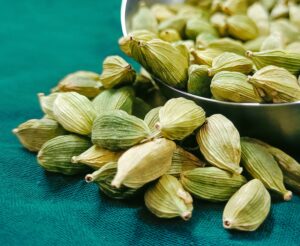
Green Cardamom: India, known for its aromatic spices, is a significant producer of green cardamom. This fragrant spice is the second most expensive spice globally, after saffron.
It is widely used in both sweet and savory dishes. Interestingly, cardamom is not only used for culinary purposes but also finds its place in traditional medicines like Ayurveda and Chinese medicine.
Its warm and sweet fragrance adds depth to dishes and provides a thermogenic effect, helping to raise body temperature.
Black Cardamom Black cardamom, with its strong and smoky flavor, aids digestion and generates warmth within the body. Unlike green cardamom,
Black cardamom is used as a whole spice due to its intense flavor. It is commonly used in Indian cuisine, adding a distinct aroma to curries, biryanis, and other savory dishes.
Cinnamon

Cinnamon, also known as cassia, is a versatile spice in various cuisines worldwide. In India, it is an essential ingredient in many curry recipes, pilafs, and biryanis, where it infuses the dishes with its aromatic essence.
Starting a cold winter day with a dash of cinnamon on top of your morning porridge or adding it to a banana smoothie can provide a warm and comforting start to your day.
Cloves

Cloves, with their aromatic and intense flavor, have antibacterial and antifungal properties. They are commonly used in Ayurvedic toothpaste and can be chewed to freshen breath.
Additionally, cloves are known for their warming effect on the body. Adding cloves to dishes not only imparts a delightful aroma but also provides a comforting and thermogenic experience.
Coriander
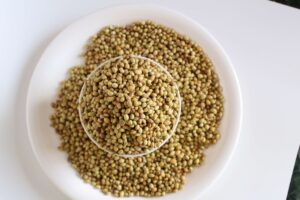
Coriander is a versatile herb and spice that offers both cooling and warming properties, depending on which part of the plant is used.
The leaves provide a cooling effect, while the seeds have a warm, nutty, and citrus-like aroma. Coriander seeds are known for their digestive properties and can be used to make a soothing tea by boiling equal amounts of cumin, coriander, and fennel seeds.
This tea can help alleviate stomach problems and provide a comforting feeling in the cold winter months.
Cumin
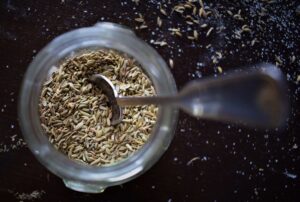
Cumin, the second-most popular spice globally after black pepper, belongs to the parsley family and has a unique taste. It is used in cuisines around the world, including Indian, Mediterranean, Middle Eastern, Mexican, and more. In ancient Roman cuisine, cumin was heavily used as a flavor enhancer.
In Sri Lanka, cumin seeds are toasted and boiled to create a tea that helps soothe stomach problems.
Adding cumin to your winter meals not only provides warmth but also enhances the flavors of your dishes.
Ginger
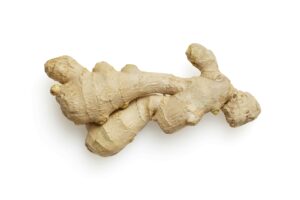
Ginger is a well-known spice with powerful warming properties. It is commonly used in Indian chai, where it is boiled with water before adding tea leaves. A study from Japan has shown that ginger intake can increase body surface temperature, making it an ideal spice for the winter season. Incorporating ginger into your meals or enjoying a cup of ginger tea can provide a comforting and warming effect, keeping you cozy during the colder months.
Garam Masala
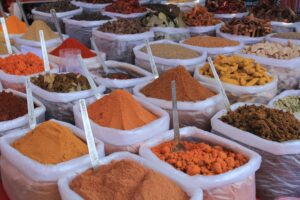
Garam masala is a blend of whole spices that are roasted to release their aromatic flavors. This spice blend is commonly used in Indian, Bangladeshi, and Pakistani cuisine. Garam masala can be used as a whole spice or ground to add warmth and depth to dishes. It is often used in meat and lentil dishes and sparingly in vegetable dishes like Palak Paneer.
To make your garam masala, you can roast the following Indian spices individually until aromatic:
Green Cardamom
Cloves
Cinnamon
Mace
Nutmeg
Pepper
Star Anise
Once roasted, store the spices in the freezer and use around 1 dessert spoon per kilogram of meat or lentil dish.
Peppercorn
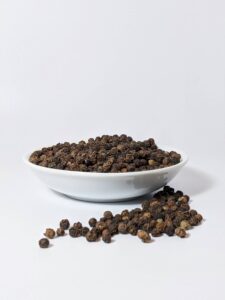
Peppercorn, particularly black pepper, is a staple condiment known for its flavor-enhancing properties. Native to South India, black pepper derives its punch from the compound piperine.
Adding a pinch of ground pepper to hot drinks or sweet desserts can provide an extra kick of warmth and flavor. In desserts, black pepper can create a unique and pronounced taste, such as in chocolate truffles.
Turmeric

Turmeric, the golden spice that has been a staple in traditional medicine for centuries, emerges as a potent ally during the winter months. Turmeric’s antiviral and antibacterial properties provide a formidable defense against common winter infections. However, all these ingredients boost your immunity, improve digestion and bone health, and reduce the risk of heart disease.
Indeed, use it in cooking and by adding turmeric to your milk for maximum benefits. In addition, you can make turmeric milk or tea during the winter nights for a warm feeling.
Tea masala
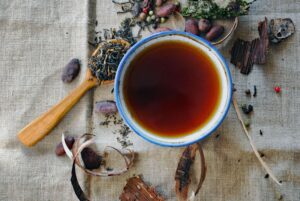
Tea Masala, also known as Chai Masala, finds its roots in ancient Ayurvedic traditions. Tea Masala lies a symphony of flavors, each spice contributing its own unique essence. Cardamom adds a sweet and floral note, while cinnamon brings warmth and depth. Ginger provides a subtle heat, and cloves introduce a hint of spice.
Saffron

Saffron stands out as a winter jewel, adding not just flavor but a touch of golden warmth to our dishes. Saffron is one of the famous wholesale Indian spices for the winter season.
with the help of saffron-made wonderful dishes in warm winter, such as saffron-infused hot chocolate, saffron rice pudding, saffron-scented mulled wine, and saffron-infused herbal teas.
Fenugreek

Fenugreek, also known as Methi, has been an integral part of traditional medicine and culinary practices across cultures for centuries.
In Ayurveda, fenugreek is revered for its immune-boosting properties, making it an ideal companion during the winter months.
Rich in antioxidants and essential nutrients, fenugreek supports the body’s natural defenses, helping you stay resilient against seasonal challenges.
Nutmeg
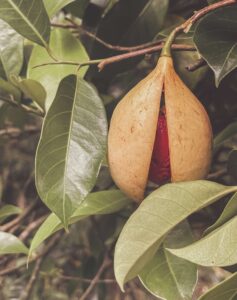
The medicinal qualities of nutmeg go beyond its taste. Nutmeg is highly praised for its digestive properties in traditional medicine.
In the winter, when there are many hearty meals, adding nutmeg to your food can help with digestion and provide comfort after heavy meals.
Mix cinnamon sticks, cloves, and dried citrus peels with nutmeg to create a fragrant mixture that will warm your house and bring in the holiday mood.
FAQ
Indian spices not only add flavor to your dishes but can also contribute to weight loss by boosting metabolism, aiding digestion, and providing other health benefits.
Conclusion
As winter approaches, embracing the use of Indian spices in our meals can provide warmth, comfort, and nourishment. Each spice brings its own unique flavor profile and therapeutic properties, making them essential ingredients in winter cooking.
From the fragrant cardamom to the versatile cumin, these spices have been used for centuries to create dishes that not only satisfy our taste buds but also help us stay cozy during the colder months.
So, let’s embrace the warmth of Indian spices and enjoy the comforting flavors they bring to our winter meals.

